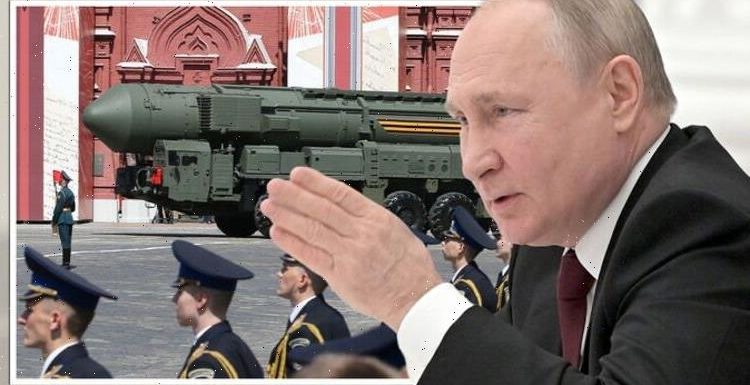
Ukraine: Putin 'considering other scenario' for invasion
We use your sign-up to provide content in ways you’ve consented to and to improve our understanding of you. This may include adverts from us and 3rd parties based on our understanding. You can unsubscribe at any time. More info
It comes after Russia tested out missiles in exercises by its strategic nuclear forces while tension with Ukraine soars. The Kremlin said: “All the missiles hit their targets, confirming their performance objectives.” The drills included Tu-95 bombers and submarines. Kremlin spokesman Dmitry Peskov added: “Such test launches, of course, are impossible without the head of state. You know about the famous black suitcase and the red button.”
According to the Federation of American Scientists (FAS), the large bulk of Russia’s suspected 6,257-strong arsenal of nuclear warheads are located towards the country’s east.
There is a test centre at Yapustin Yar, not far from the east coast, and an intercontinental missile base (ICBM) base Dambarovksiy, one of the nearest to Ukraine.
There are several more bases, including Darazhnya and Pervomaysk dotted further up the coast.
Russia has almost 20 known missile bases – which can be seen on the map below.
The country has claimed that all nuclear weapons that used to be deployed outside Russia have been withdrawn into its own territory.


Around 1,444 of Russia’s weapons are known as strategic warheads, weapons that are designed to be used on targets.
These are made up of 527 intercontinental ballistic missiles (ICBMs), submarine-launched ballistic missiles (SLBMs), and heavy bombers, according to data from New Start.
Russia signed the New Start agreement in April 2010, which required it to slash its strategic nuclear arsenal to 1,550 operational warheads and 800 deployed and non-deployed launchers by February 2018.
But it is suspected that the number of deployed Russian warheads may be higher.
The agreement only counts one strategic bomber as one operationally deployed warhead.

This is despite the fact that warheads like the Tu095 MS16 bomber can carry up to 16 weapons.
Non-strategic nuclear weapons are those which are designed to be used on a battlefield.
Also called tactical nuclear weapons, most analysts suspect that Russia’s arsenal of these intimidating weapons can be used in air, naval, and ground-based air defence.
Worryingly, Russia has never fully disclosed the exact number and kinds of weapons in its non-strategic nuclear stockpile.
Estimates differ, but one open-source tipped that from April 2018, the number of Russia’s non-strategic stockpile consisted of 1,800 weapons systems.
DON’T MISS
Heart disease: Oxford Uni finds eating veggies offers no protection [REPORT]
Archaeology breakthrough as metal detectorist unearths gold brooch [REVEAL]
Ukraine goes nuclear and cuts ALL gas with Russia [INSIGHT]

Russia is also said to be in the process of modernising its whole arsenal of strategic nuclear weapons and delivery systems.
This includes the development of a number of new systems intended to counter the deployment of US/NATO missile defence systems in Europe.
And this comes as tensions between NATO and Russia have soared after the Kremlin piled up close to 190,000 troops on Ukraine’s borders, according to the latest reports.
Russia has said that it would view Ukraine’s membership of NATO as a direct threat.
NATO is now reportedly planning to deploy new combat units to central and southeastern Europe if Russia does not pull back its troops.

It would involve sending around 4,000 troops to Romania, Bulgaria, Hungary and Slovakia.
Jens Stoltenberg, NATO’s Secretary General, said: “So far we do not see any sign of de-escalation on the ground – no withdrawals of troops or equipment.
“Russia maintains a massive invasion force ready to attack.”
And tensions soared further last night when Mr Putin chose to recognise two regions in Ukraine as breakaway regions and not part of the country.
The decree signed by the Russian President recognised the independence of the self-declared people’s republics of Donetsk and Luhansk in eastern Ukraine.
This is where Russian-backed rebels have been in conflict with Ukrainian forces since 2014.
Source: Read Full Article